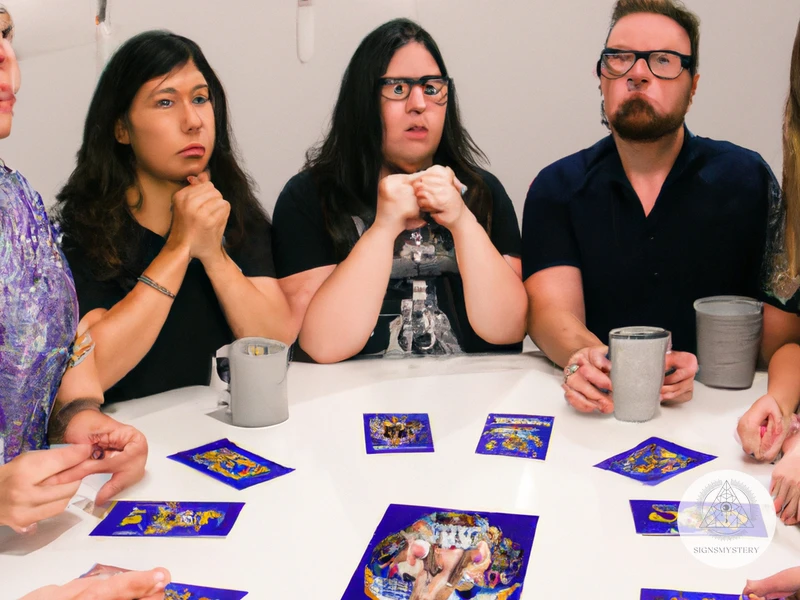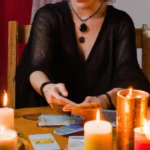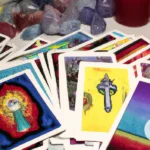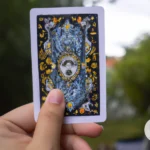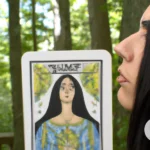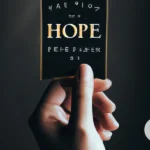Tarot readings have been popular for centuries, offering individuals a means of gaining insight into their lives and futures. However, the symbolism on tarot cards doesn’t always carry the same meaning across cultures. The impact of cultural backgrounds on tarot symbolism is a complex and fascinating subject, delving into the origins of tarot, the influence of different cultural interpretations, and the varied ways in which tarot cards are interpreted. In this article, we will explore the history of tarot, different cultural interpretations of tarot symbolism, and the diverse interpretations of some of the most enigmatic tarot cards.
The History of Tarot
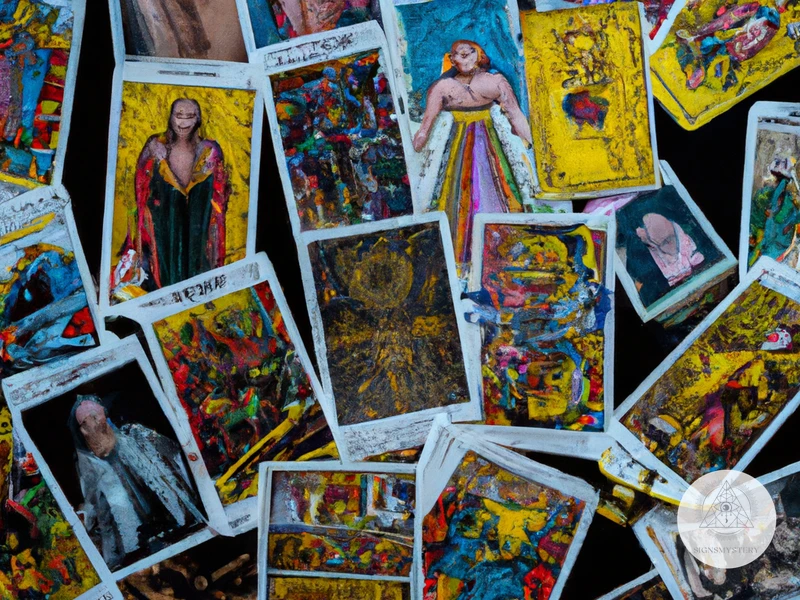
The history of tarot is shrouded in mystery and legend, with many accounts and theories. Some scholars have traced the origins of tarot to ancient Egypt, while others believe it originated in medieval Europe. The most widely accepted theory is that tarot cards were first created as playing cards in Italy in the 15th century. These cards were richly decorated with symbolism and were used for divinatory purposes by the 18th century. Tarot symbolism includes elements of numerology, astrology, and other esoteric traditions, making it a complex art to master. Since its inception, tarot has spread across Europe and into other parts of the world, with each culture putting their own spin on the cards. Today, there is a wide variety of tarot decks available, each with its own unique symbols and meanings.
The Origins of Tarot
The origins of Tarot are somewhat mysterious and debated among historians and scholars. Some theories suggest that Tarot originated in ancient Egypt, while others suggest that it has roots in medieval Europe. The first documented evidence of Tarot can be traced back to the 15th century in northern Italy, where its use as a card game is well-documented. The Tarot deck at this time was known as “Tarocchi,” and it was not until the late 18th century that the Tarot began to be used for divination and other spiritual practices.
One popular theory about the origins of Tarot is that the cards were originally used as part of a game played in medieval Europe. The game, which was similar to bridge, was called “Tarocchi” and featured a deck of cards that is believed to have included many of the same images found in modern Tarot decks. Over time, the game spread across the continent and the cards began to be used for divination and other spiritual practices.
Another theory suggests that Tarot has its roots in ancient Egypt, with the images on the cards representing the wisdom of the pharaohs. Some historians point to the similarities between the imagery on the Tarot cards and the symbols and motifs found in Egyptian art and iconography. However, there is little concrete evidence to support this theory, and many believe that it is more likely that Tarot evolved independently in Europe.
Regardless of its true origins, Tarot has become an integral part of many cultures and spiritual practices around the world. The cards themselves have evolved over time, with new decks being created and new interpretations of the symbolism emerging. Today, Tarot is used by people of all backgrounds and beliefs to gain insight into their lives and the world around them. If you’re interested in exploring Tarot symbolism and meanings further, check out these tips for deciphering Tarot symbols, or delve into the major arcana and suits and symbols of the deck.
Tarot Spreads Across Europe
During the 14th century, Tarot cards began to gain popularity among European nobility. This was largely due to the growing interest in divination and occult practices during the Renaissance. Initially, Tarot was primarily used for card games and entertainment, but it later became associated with divination and spirituality.
Over time, Tarot spread throughout Europe, and different regions began to develop their own variations of the Tarot deck. For example, the Italian Tarot and French Tarot are two popular variations, each with their own unique set of cards and symbolism.
Italian Tarot: The Italian Tarot, also known as the Tarocco, is one of the oldest Tarot decks in existence. It features 78 cards, divided into the Major Arcana and Minor Arcana, and is known for its intricate illustrations and bold colors. The Italian Tarot places a strong emphasis on the importance of wealthy patrons and ruling families, which is reflected in the artwork of the cards.
French Tarot: The French Tarot is another popular variation of Tarot, featuring 78 cards divided in the Major Arcana and Minor Arcana. It is known for its more minimalist artwork and focus on themes of love and relationships. The French Tarot is also notable for its use of intricate patterns and geometric shapes in the design of the cards.
As Tarot spread throughout Europe, it began to influence and be influenced by different forms of spirituality and belief systems. For example, the influence of Kabbalah on Tarot can be seen in the Tarot de Marseille, which is a French Tarot deck that emphasizes the four elements and astrological symbolism.
The spread of Tarot across Europe played a significant role in shaping and developing the diverse interpretations of Tarot symbolism that we see today. If you want to learn more about Tarot symbolism, check out our article on Numerology and Tarot Symbolism or Tips for Decoding Tarot Symbols.
Interpreting Tarot Symbolism
When it comes to interpreting Tarot symbolism, it’s important to understand the difference between the Major Arcana and Minor Arcana. The Major Arcana, consisting of 22 cards, each hold a powerful, archetypal energy that speaks to overarching themes and lessons in life. Meanwhile, the Minor Arcana is more focused on specific, everyday situations and experiences. Each card in the Minor Arcana is associated with one of four suits – Wands, Cups, Swords, and Pentacles – which can provide further insight into the message of the card. The cultural background can also influence the interpretation of Tarot symbolism significantly. To enhance your understanding of Tarot symbolism, consider exploring the Tarot’s connections to the four elements, incorporating animal symbolism, reading reverse Tarot cards, or exploring astrological influences on the Tarot.
Major and Minor Arcana
In tarot, there are 78 cards that are divided into two main groups: Major Arcana and Minor Arcana. The Major Arcana are 22 cards that represent significant life events, while the Minor Arcana comprise 56 cards and deal with everyday influences.
The Major Arcana cards are also known as trump cards and hold great significance in tarot reading. Each of these cards represents a unique event or aspect of life, such as love, death, or rebirth. In contrast, the Minor Arcana cards are divided into four suits, similar to playing cards – Wands, Cups, Swords, and Pentacles. Each suit is associated with a specific element (fire, water, air, and earth) and represents different aspects of life, including creativity, emotions, conflict, and material possessions.
As tarot spreads across different countries and cultures, the interpretation of the Major and Minor Arcana cards also changes. The origin of each deck can influence the names and meanings of the cards. For instance, in the Rider-Waite tarot, the Death card signifies the end of a cycle, while in the Thoth tarot, the same card represents transformation. Hence, it is essential to understand the cultural context of the deck being used.
Tarot readers often use the Major Arcana cards to gain insight into significant life changes or to explore the meaning of a situation. On the other hand, the Minor Arcana helps to clarify everyday occurrences or to provide a better understanding of the overall situation.
Taking time to understand the nature and meaning of the Major and Minor Arcana is crucial for anyone interested in the art of tarot reading. These cards hold a wealth of insight and knowledge that can help us gain perspective and wisdom on our life’s journey.
The Influence of Cultural Backgrounds
Tarot symbolism has been impacted by cultural backgrounds, which have played a significant role in shaping the meanings and interpretations of each card. The cultural background of an individual or a deck’s creator can affect the way a card is illustrated, the symbols used, and the overall meaning assigned to the card.
For instance, in Western cultures, the Devil card is often depicted as a horned, red creature with wings. This is influenced by the Christian interpretation of the Devil as a fallen angel. In contrast, in some non-Western cultures, the Devil card may be portrayed as a malevolent human being or a supernatural demon. The cultural differences in the perception of this card can cause differences in understanding, interpretation, and meaning.
Another example of the impact of cultural background is evident in the portrayal of the Death card. In Western cultures, this card is often depicted as a skeleton carrying a scythe, representing the end of life and transition to a new phase. However, in some cultures, such as Chinese or Egyptian, death is viewed as a continuation of life, and the Death card might be illustrated with an entirely different set of symbols.
The Tarot is believed to have originated from diverse cultures. It is said to have ties to the ancient Egyptian Book of Thoth, the Kabbalah, and the Greek and Roman gods. From its origins, the Tarot has been influenced by the cultural and mystical beliefs of its creators and interpreters.
The cultural background that most deeply influenced Tarot symbolism was the European Renaissance, which gave rise to Humanism and a renewed interest in the ancient classical world. As a result, European Tarot decks, such as the Rider-Waite Tarot, often incorporate imagery from Greek and Roman mythology. Additionally, the Rider-Waite Tarot uses Christian symbolism in many of its cards, such as the Judgement and Hierophant cards.
To fully comprehend tarot symbolism, it is necessary to recognize how cultural backgrounds affect the interpretation of each card. A tarot reader’s cultural background and understanding affect how they interpret the cards and make connections between them. The Tarot’s symbolic language is intricate and complex, encompassing many different cultures and meanings.
Internal Link: If you are interested in learning about the symbolism of the four elements in tarot, check out our article on Tarot and the Four Elements.
Western Tarot Symbolism
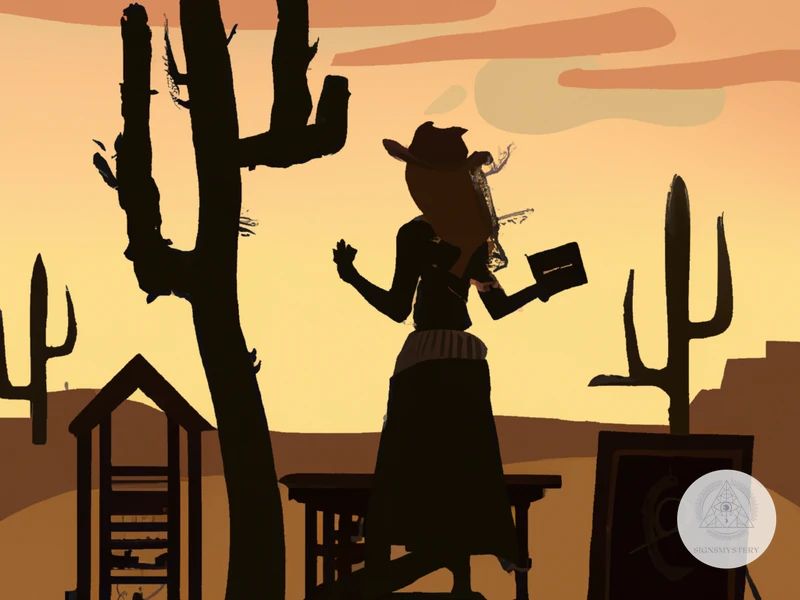
Western Tarot symbolism has a long and intricate history that has evolved over the centuries. The Rider-Waite Tarot, designed in 1909 by artist Pamela Colman Smith and occultist Arthur Edward Waite, is the most widely recognized and used Western Tarot deck. Its intricate illustrations and striking colors make it stand out among other Western Tarot decks, such as the Thoth Tarot, which was designed by Aleister Crowley and illustrated by Lady Frieda Harris. Other Western Tarot decks, while less popular, still hold significant value in the Tarot community, such as the Animal Tarot, which utilizes hidden meanings and animal symbolism to provide insight into a reading. With so many unique interpretations and variations, Western Tarot symbolism remains an intriguing and complex topic that continues to fascinate Tarot enthusiasts.
The Rider-Waite Tarot
The Rider-Waite Tarot is perhaps one of the most recognizable tarot decks in the Western world. It was first published in 1909 and featured the artwork of Pamela Colman Smith and the guidance of Arthur Edward Waite. This deck is known for its bold lines, bright colors, and use of symbolism that has become synonymous with tarot.
The Major Arcana cards of the Rider-Waite Tarot feature some of the most recognizable symbolic imagery in the tarot world. The Fool, for example, is seen wearing brightly colored clothes and carrying a knapsack, a white rose, and a walking stick. The Magician is depicted with the symbols of the four elements – earth, air, fire, and water – on his table, representing his ability to manifest his desires in the physical world.
Similarly, the Minor Arcana cards in the Rider-Waite Tarot feature a wealth of symbolic imagery. Each of the four suits – cups, pentacles, swords, and wands – is associated with a different element and carries its own unique meaning. For example, the Ace of Cups is a symbol of emotional abundance and new beginnings, while the Two of Swords represents a difficult decision that must be made.
Despite its popularity, the Rider-Waite Tarot has faced criticism for its lack of diversity. The majority of the characters depicted in the deck are white, and there is little representation of non-Western cultures or religions. This lack of diversity has led many tarot enthusiasts to seek out decks that offer a more inclusive representation of the world, such as the Animal Tarot, which celebrates the role of animals in our lives.
Regardless of its shortcomings, the Rider-Waite Tarot remains an essential part of the tarot canon. Its imagery has influenced countless other decks, and its symbolism continues to resonate with tarot readers of all backgrounds. Whether you are a beginner or an experienced reader, the Rider-Waite Tarot is a deck that is sure to inspire and enlighten.
The Thoth Tarot
The Thoth Tarot, also known as the Crowley-Harris Tarot, was created by Aleister Crowley and Lady Frieda Harris and published in 1969. It is one of the most popular tarot decks in the world, known for its intricate and colorful artwork, as well as its esoteric symbolism. This deck is based on the Rider-Waite Tarot, but with many additions and changes.
The Thoth Tarot includes 78 cards, divided into the Major Arcana and Minor Arcana. The Major Arcana cards feature titles such as The Magus, The Chariot, The High Priestess, and The Fool. Each card is filled with intricate symbolism and occult references, making it a popular choice among those interested in mysticism and the occult.
One of the unique features of the Thoth Tarot is the addition of new cards to the Major Arcana, such as The Aeon and The Universe. These cards were created by Crowley and Harris to represent new concepts and ideas that they believed were important to include in the tarot.
Another notable feature of the Thoth Tarot is its use of color symbolism. Each card is filled with multiple colors, each with its own meaning and significance. For example, the color green is often used to represent growth and abundance, while red is associated with passion and energy.
The Thoth Tarot also includes many references to ancient Egyptian mythology and symbolism. This is particularly evident in the Major Arcana cards, which feature images of Egyptian gods and goddesses such as Isis, Osiris, and Horus.
The Thoth Tarot is a complex and fascinating deck that offers a unique perspective on tarot symbolism. Its intricate artwork and esoteric references make it a popular choice among those interested in the occult. If you’re interested in exploring the Thoth Tarot further, be sure to check out some of the resources available online or consider taking a deep dive with this hidden meanings in the Animal Tarot article.
Other Western Tarot Decks
Apart from the Rider-Waite and Thoth tarot decks, there are other Western tarot decks that have their own unique interpretations of the symbolism. One of these is the Marseille Tarot, which is the most popular tarot deck in France, and is believed to have originated in Italy. The Marseille Tarot was also used as a foundation for further developments of tarot, such as the Tarot de Besançon.
Another popular and relatively modern deck is the Tarot of the Sevenfold Mystery. It is inspired by the Western Hermetic and Qabalistic traditions of magick and tarot, and it focuses on the symbolism from those traditions. The deck has 78 cards, and each card features intricate and colorful designs that reflect the various themes of the deck, such as astrology, numerology, and alchemy.
The Golden Tarot is another deck that has gained popularity recently. It is a reproduction of a 15th-century tarot deck, which was created in the Italian city of Milan. The deck features hand-painted illustrations on gold leaf, which gives it a unique and luxurious appearance. The Golden Tarot consists of 78 cards, each with its own unique symbolism and meaning.
Finally, the Deviant Moon Tarot is a deck that has gained a reputation for its dark and twisted interpretation of tarot symbolism. It has 78 cards, each with its own unique design that reflects the macabre imagery of the deck. The Deviant Moon Tarot draws inspiration from sources such as German Expressionism and the works of H.P. Lovecraft.
There are many Western tarot decks available, each with its own unique interpretation of the symbolism. While some decks may resonate more with certain individuals than others, they all offer valuable insights and guidance through the use of tarot. For those interested in learning more about tarot, it is recommended to explore different decks and see which ones align with their personal beliefs and values.
Link: Astrology and Tarot: Understanding Zodiac Symbolism
Non-Western Tarot Symbolism
Non-western Tarot Symbolism is a fascinating subject that takes us on a journey to various parts of the world where Tarot has made a significant impact. In Japan, Tarot decks consist of 78 cards, just like the Western Tarot. The main difference is that the Japanese Tarot has different images and meanings. The cards feature traditional Japanese symbols and motifs, and the interpretations are more straightforward and literal. In China, the Tarot has been used for centuries, but the meanings and symbols are based on Chinese mythology and cultural beliefs. African Tarot also holds a unique place in the Tarot world by incorporating African folklore and customs into its decks. The diversity of Tarot symbolism across cultures highlights the universal appeal of Tarot and its ability to adapt to different cultural backgrounds.
Tarot in Japan
Japan is a country with a rich culture and history, and tarot cards have had their place in that history. In the early 20th century, tarot decks started appearing in Japan, and they were
Subscribe to Our Newsletter
Sign up to receive the latest news and updates.
One popular Japanese tarot deck is the Ukiyoe Tarot, which draws heavily on Japanese art and culture. The deck features traditional Japanese costumes and settings, as well as well-known landmarks. The interpretations of the cards in the deck reflect Japanese culture, with some cards being given different or additional meanings. For example, the Emperor card may represent a father figure rather than a ruler, and the Moon card may symbolize fear rather than the subconscious.
Another unique aspect of tarot in Japan is the use of the Osho Zen Tarot deck. This deck is based on the traditional tarot deck, but it is infused with Zen philosophy and Eastern symbolism. The deck has its own interpretations and meanings and is meant to be used as a tool for self-discovery and meditation.
Despite the cultural differences, the core symbolism of tarot remains intact in Japan’s interpretation of the cards. The Major Arcana still represents major life events and spiritual growth, and the Minor Arcana still represents everyday occurrences and challenges. However, the cultural background of Japan has influenced the specific meanings and interpretations of each card.
Tarot in Japan has its own unique flavor and interpretation. The blending of traditional tarot symbolism with Japanese art, culture, and philosophy has created a distinct tarot experience. It is fascinating to see how the impact of cultural backgrounds has influenced the interpretation of tarot cards, not just in Japan but around the world.
Tarot in China
Tarot may not be as popular in China as it is in Western countries, but it still holds a significant place in Chinese culture. The Chinese government banned the use of tarot cards during the Cultural Revolution in the 1960s and 1970s, but the practice has since made a comeback, with many seeking guidance from tarot readers.
The Chinese Tarot Deck
One of the most popular tarot decks used in China is the Chinese Tarot Deck, also known as the Daoist Tarot. This deck combines Chinese characters, symbols, and imagery with traditional tarot symbolism, such as the Major and Minor Arcana. The Chinese Tarot Deck is based on the teachings of the I Ching, an ancient Chinese divination text that dates back to the Zhou Dynasty.
The Influence of Taoism and Confucianism
China has a rich spiritual tradition, and two major philosophies that influence Chinese tarot symbolism are Taoism and Confucianism. Taoism emphasizes living in harmony with the natural world, and this is reflected in the use of elements such as water, wood, fire, metal, and earth in Chinese tarot symbolism. Confucianism, on the other hand, teaches the importance of morality, ethics, and social hierarchy, which are reflected in the emphasis on balance and harmony in the Chinese Tarot Deck.
The Role of Family and Ancestors
Family and ancestors play a significant role in Chinese culture, and this is reflected in Chinese tarot symbolism. The Four Pillars of Destiny, also known as the Four Pillars of Wisdom, are a form of Chinese astrology that is used to determine a person’s destiny. This is based on the year, month, day, and hour of a person’s birth, and takes into account the elements of fire, earth, metal, water, and wood. The Four Pillars are said to represent a person’s family, ancestors, and social status.
While tarot may not be as well-known in China as it is in the West, it still holds a significant place in Chinese culture. The Chinese Tarot Deck combines traditional tarot symbolism with Chinese philosophy and spirituality to provide guidance and insight for those seeking it.
Tarot in Africa
Tarot has gained popularity in Africa over the past few decades, with many people incorporating tarot readings into their spiritual practices. Several different interpretations of tarot symbolism have been developed in Africa, blending traditional African beliefs with tarot symbolism and divination.
In Kenya, tarot has been incorporated into the practice of “throwing bones,” which involves throwing marked bones and interpreting their positions. Tarot cards have been added to the mix to provide more specific divinatory guidance.
In South Africa, tarot is often used in conjunction with traditional African divination methods such as sangomas (traditional healers). Sangomas use divination tools like cowrie shells, and tarot cards have been added to their toolboxes as an additional source of guidance.
One example of a tarot deck developed in Africa is the “Motherpeace Tarot,” created by Vicki Noble and Karen Vogel. The deck features imagery inspired by “the female life force and the interconnected web of life on earth.” The artwork is colorful and bold, with a focus on the feminine and maternal.
It’s fascinating to see how African cultures have integrated tarot symbolism into their traditional spiritual practices. Tarot is used as a tool for guidance and insight, with interpretations that blend both African and Western perspectives.
Diverse Interpretations of Tarot Cards
Tarot cards have numerous interpretations, as the symbolism depicted can be perceived differently by people with varying cultural backgrounds and experiences. Even the same card can have different meanings depending on its position in a spread or whether it appears upright or reversed. For example, the Death card can represent transformation and new beginnings in some interpretations, while it can indicate actual death or loss in others. The Moon card can symbolize intuition and the subconscious mind, but it can also suggest confusion or deceptive behaviors. The Sun card can represent happiness and success, but it can also signify excessive pride or arrogance. Any tarot reader will tell you that interpreting these cards is not a straightforward process. However, learning to trust your intuition and incorporating your cultural background into your readings can help provide insight and clarity. For those interested in learning more about reading reverse tarot cards, check out the useful guide on reading reverse tarot.
The Death Card
The Death Card is one of the most misinterpreted cards in the Tarot deck. Many people immediately assume that it represents physical death, but the truth is much more nuanced. In fact, the Death Card often signifies transformation and change.
In a Tarot reading, the appearance of the Death Card can indicate the end of a cycle or a major change that is about to occur. It can also suggest the need to let go of old patterns and embrace new opportunities. It’s important to note that while this card can be unsettling, it’s rarely a literal indication of death.
The interpretation of the Death Card can vary based on cultural backgrounds, as well. In Western Tarot decks, the imagery often features a skeleton or skull, which can understandably be jarring to some. However, in non-Western Tarot decks, the Death Card may be portrayed in a more symbolic way, such as the ending of a season or the decay of a plant.
It’s important to approach the Death Card with an open mind and without preconceived notions. This card can represent both the destruction of old habits and the rebirth of new ones. It may signify the end of a relationship, a career, or a way of thinking. Whatever the meaning, it’s important to remember that the Death Card ultimately represents change, renewal, and growth.
While at first glance the Death Card may seem ominous, it’s important to look beyond the surface and uncover its true meaning. In Tarot readings, this card can be a powerful motivator for transformation and growth.
The Moon Card
The Moon Card is one of the most enigmatic and mysterious cards in the Tarot. It is associated with intuition, dreams, and the subconscious mind. The Moon represents the feminine, receptive, and creative aspects of our being. This card is also associated with secrets, illusions, and hidden truths.
In the tarot’s Major Arcana, the Moon Card is the 18th trump card. It shows a scene with a full moon, two towers, a dog and a wolf howling at the moon, a crayfish crawling out of the water, and a path that leads into the distance. The card is full of symbolism and meaning.
The full moon represents illumination and clarity, and the fact that there are two towers could indicate a choice between two paths. The dog and wolf represent the conscious and unconscious minds, while the crayfish symbolizes the part of us that is still evolving and growing. The path in the card suggests a journey into the unknown.
The Moon Card in Different Tarot Decks
In the Rider-Waite Tarot, the Moon Card is depicted with a moon crescent in the background and a path that comes out from the water. There is a wolf and a dog howling towards the moon and a crawfish emerging from the water. In contrast, the Thoth Tarot presents the same card with more emphasis on the shadow side, highlighting the forces of doom and negativity.
Interpreting the Moon Card
The Moon Card is often associated with uncertainty and anxiety. It can signify that we are going through a period of emotional upheaval, confusion, or deception. It can be a warning to be careful of false appearances and illusions. Alternatively, it can be seen as encouraging us to tap into our intuition and look beyond appearances to reveal hidden aspects of ourselves or the situation.
When the Moon Card appears in a Tarot reading, it is crucial to take the time to reflect and connect with our inner selves. It could be time to accept that not everything is as it seems and that there are some hidden parts that need our attention. The Moon Card is an invitation to trust our intuition, dreams and emotions to help us navigate the unknown path of life.
The Sun Card
The Sun card is one of the most positive cards in the tarot deck, symbolizing optimism, vitality, and warmth. Its imagery usually depicts a bright and shining sun, often with a child or naked figure holding or basking in its rays. The card represents a time of joy, growth, and success, suggesting that the future is bright and full of possibilities.
In Western tarot decks, the Sun card is typically associated with the zodiac sign of Leo, known for its confidence, creativity, and leadership skills. The card is also often interpreted as representing a sense of inner clarity and purpose, as well as a renewed sense of vitality and confidence.
In non-Western tarot decks, such as the Japanese tarot, the Sun card may take on a different meaning based on cultural background and symbolism. For example, in Japan, the card may be associated with the rising sun and the country’s imperial history, representing the power and regal nature of its rulers.
Interpretations of the Sun card may also vary depending on the spread and surrounding cards. When paired with the Moon card, for example, the Sun might be interpreted as balancing intuition and logic or overcoming illusions. When paired with the Death card, the Sun can represent a sense of rebirth and renewal after a dark or difficult period.
The Sun card is a symbol of positivity, vitality, and growth, emphasizing the importance of confidence, clarity, and purpose. Whether in Western or non-Western interpretations, the Sun card is a beautiful and powerful symbol full of hope and possibility.
Conclusion
In conclusion, it is clear that cultural backgrounds have a significant impact on Tarot symbolism. The history of Tarot reveals its origins in Europe, and its evolution across different regions has led to diverse interpretations of Tarot cards. The Western Tarot symbolism, particularly the Rider-Waite Tarot, is widely recognized and used, but non-Western Tarot decks have also gained popularity.
The Major and Minor Arcana are the two main categories of Tarot cards, each with distinct symbolism and meanings. However, the influence of cultural backgrounds can add layers of interpretation to Tarot symbols, enriching their significance and adding new dimensions to readings.
The Death Card, the Moon Card, and the Sun Card are just a few examples of Tarot cards that have diverse interpretations across cultures. The Death Card can signify the end of a cycle or transformation in Western Tarot, but in Eastern Tarot, it can represent rebirth and new beginnings.
The Moon Card can represent intuition and the unconscious mind in Western Tarot, but in African Tarot, it can symbolize fertility and new life. Similarly, the Sun Card can indicate success and positivity in Western Tarot, but in Japanese Tarot, it can represent a warning of overconfidence and arrogance.
In summary, Tarot symbolism is not static, but rather a dynamic aspect of culture that evolves and adapts over time. The diverse interpretations of Tarot cards across different cultural backgrounds offer a unique perspective on the world and enable readers to broaden their understanding of themselves and others. The beauty and complexity of Tarot symbolism continue to make it a valuable tool for spiritual growth and personal reflection.
Frequently Asked Questions
1. What does the term “Arcana” mean in Tarot?
“Arcana” refers to the two sets of cards in a Tarot deck, the Major Arcana and the Minor Arcana. The word “Arcana” means “secrets” or “mysteries” in Latin.
2. What is the Major Arcana?
The Major Arcana consists of 22 cards that represent significant life events or archetypal figures. These cards are often seen as the most significant in a Tarot reading.
3. What is the Minor Arcana?
The Minor Arcana consists of 56 cards divided into four suits (Wands, Cups, Swords, and Pentacles). These cards represent everyday events and experiences.
4. What is the most popular Tarot deck used in the Western world?
The Rider-Waite Tarot deck, also known as the Rider Tarot or the Waite Tarot, is the most popular Tarot deck in the Western world.
5. What is the Thoth Tarot?
The Thoth Tarot is a Tarot deck created by artist and occultist Aleister Crowley. It is known for its unique interpretations of Tarot symbolism.
6. How does Tarot differ in Japan?
Tarot in Japan is often used for divination, but it is also used as a game. Japanese Tarot decks typically have 78 cards but differ in their artwork and meanings.
7. What is the significance of the Death card in Tarot?
The Death card in Tarot does not represent physical death, but rather the end of a cycle or transformation. It can also represent change and new beginnings.
8. Why does Tarot symbolism differ across cultures?
Tarot symbolism differs across cultures due to the diverse beliefs, values, and experiences of different societies. Tarot was also adapted and modified as it spread across the world.
9. Can anyone learn to read Tarot cards?
Yes, anyone can learn to read Tarot cards. It takes practice, patience, and a willingness to learn about Tarot symbolism and interpretation.
10. Is Tarot a valid tool for personal growth and self-discovery?
Many people believe that Tarot can be a valuable tool for personal growth and self-discovery. It can help individuals gain insight into their thoughts, emotions, and experiences.

